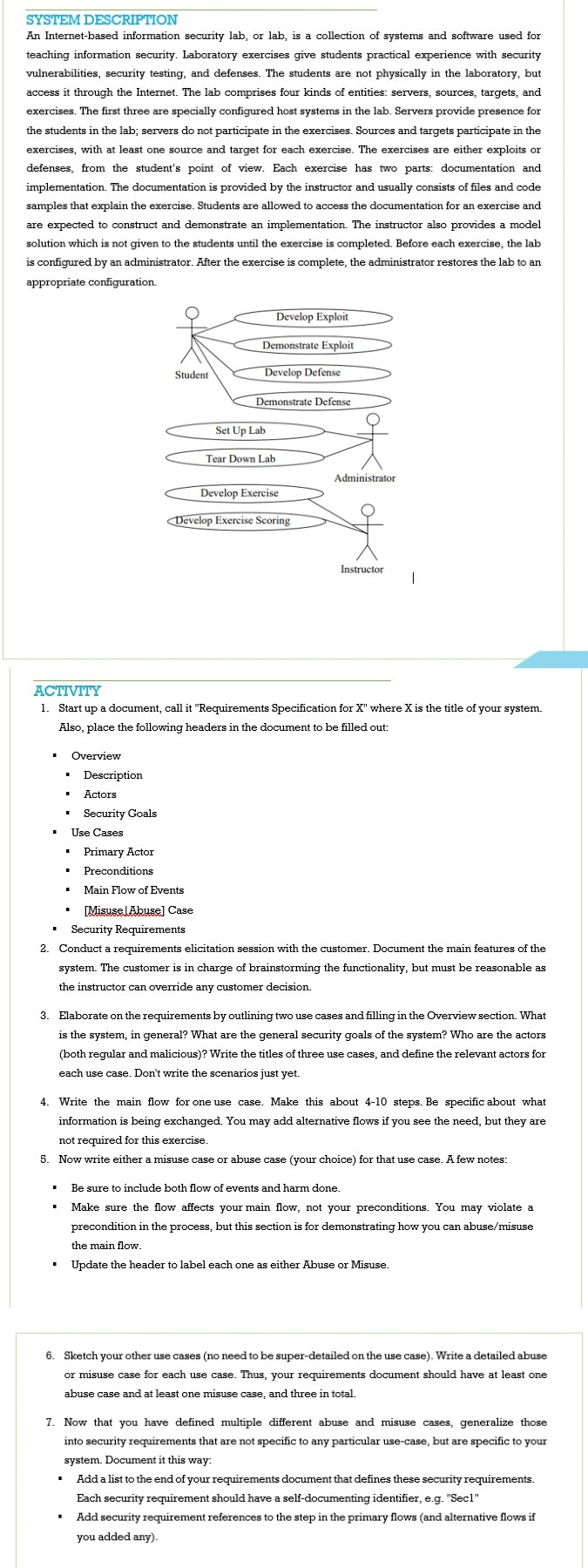Answered step by step
Verified Expert Solution
Question
1 Approved Answer
ACTIVITY Start up a document, call it Requirements Specification for x where x is the title of your system. Also, place the following headers
ACTIVITY
Start up a document, call it "Requirements Specification for where is the title of your system.
Also, place the following headers in the document to be filled out:
Overview
Description
Actors
Security Goals
Use Cases
Primary Actor
Preconditions
Main Flow of Events
MisuselAbuse Case
Security Requirements
Conduct a requirements elicitation session with the customer. Document the main features of the
system. The customer is in charge of brainstorming the functionality, but must be reasonable as
the instructor can override any customer decision.
Elaborate on the requirements by outlining two use cases and filling in the Overview section. What
is the system, in general? What are the general security goals of the system? Who are the actors
both regular and malicious Write the titles of three use cases, and define the relevant actors for
each use case. Don't write the scenarios just yet.
Write the main flow for one use case. Make this about steps. Be specific about what
information is being exchanged. You may add alternative flows if you see the need, but they are
not required for this exercise.
Now write either a misuse case or abuse case your choice for that use case. A few notes:
Be sure to include both flow of events and harm done.
Make sure the flow affects your main flow, not your preconditions. You may violate a
precondition in the process, but this section is for demonstrating how you can abusemisuse
the main flow.
Update the header to label each one as either Abuse or Misuse.
Sketch your other use cases no need to be superdetailed on the use case Write a detailed abuse
or misuse case for each use case. Thus, your requirements document should have at least one
abuse case and at least one misuse case, and three in total.
Now that you have defined multiple different abuse and misuse cases, generalize those
into security requirements that are not specific to any particular usecase, but are specific to your
system. Document it this way:
Add a list to the end of your requirements document that defines these security requirements.
Each security requirement should have a selfdocumenting identifier, eg "Secl"
Add security requirement references to the step in the primary flows and alternative flows if
you added any

Step by Step Solution
There are 3 Steps involved in it
Step: 1

Get Instant Access to Expert-Tailored Solutions
See step-by-step solutions with expert insights and AI powered tools for academic success
Step: 2

Step: 3

Ace Your Homework with AI
Get the answers you need in no time with our AI-driven, step-by-step assistance
Get Started


